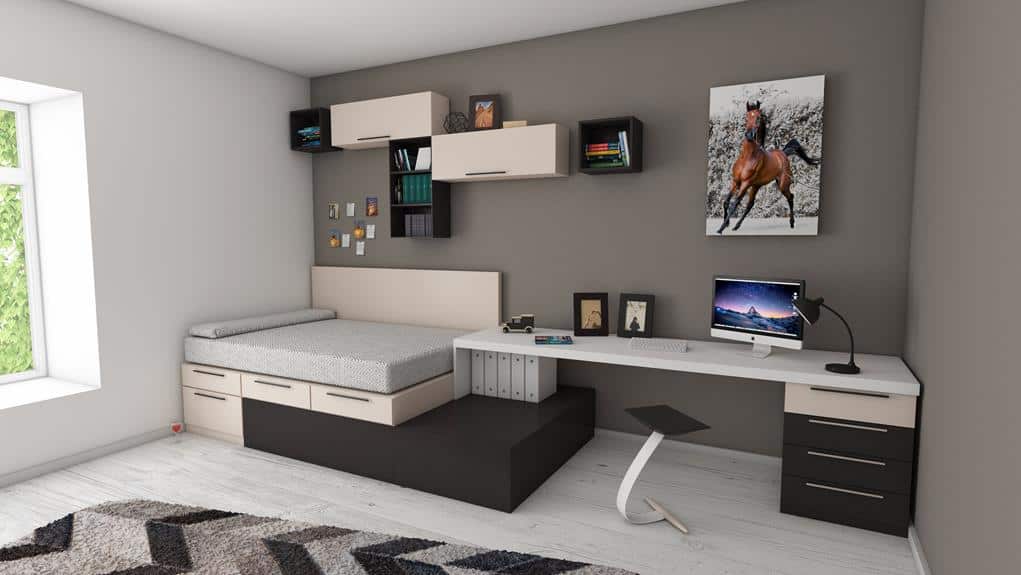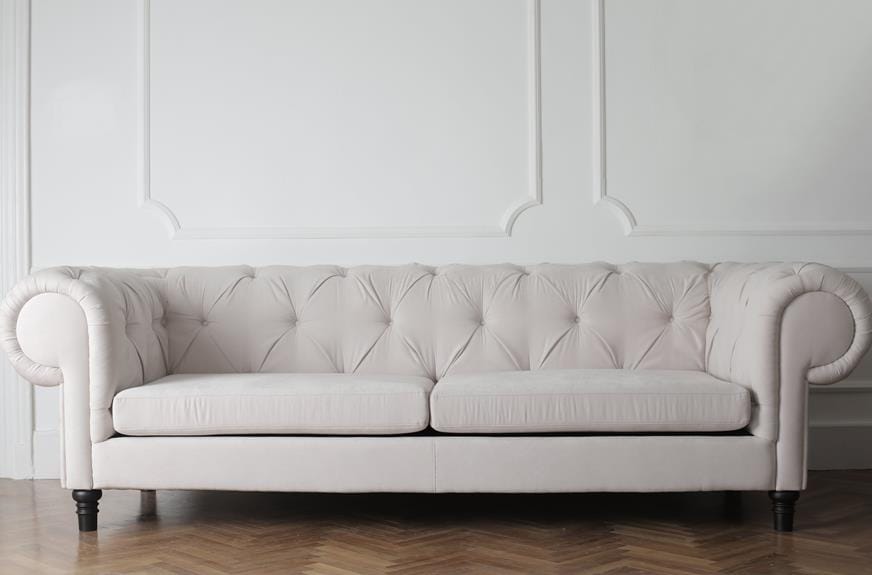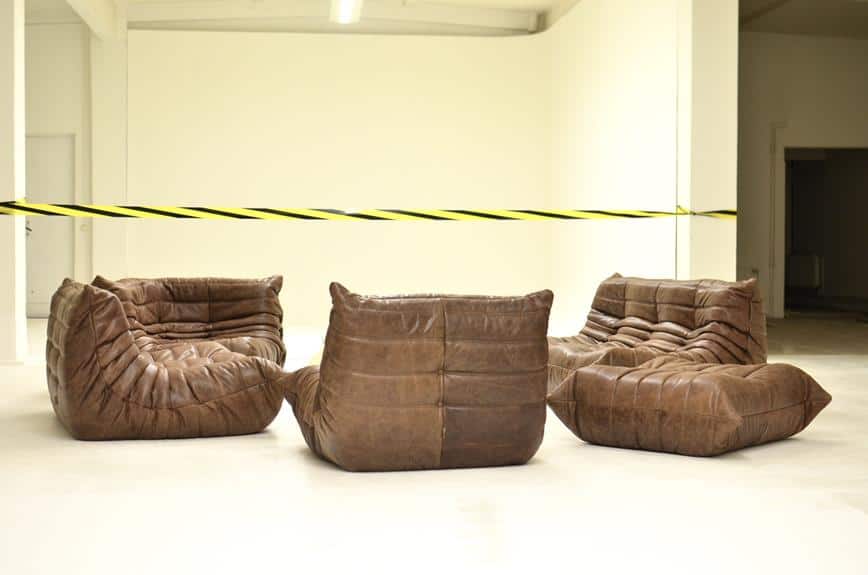Torchiere floor lamps emit the most light as they direct light upward to the ceiling, providing a bright, ambient light with little glare. They are more effective when they have high-lumen bulbs and reflective interiors.
Arc floor lamps offer focused light suitable for reading or tasks.
Standard floor lamps can also give off ample light if they have high-wattage bulbs and a translucent shade.
The brightest floor lamp depends on the bulb, design, and purpose of the lamp.
Understanding Lumens and Wattage
To select a bright floor lamp, it's important to understand lumens and wattage. Lumens measure the light output and higher lumens mean a brighter lamp. Wattage measures energy use; with newer LED technology, a lamp can be bright without using much energy.
LED floor lamps provide more lumens per watt than old incandescent bulbs, making them energy-efficient. The color temperature of a bulb also affects how bright the light seems. Cooler color temperatures often appear brighter.
The lamp's design influences brightness. Torchiere lamps shine light upwards to spread it evenly, which is good for ambient lighting. Lamps with adjustable brightness levels offer flexibility for different needs.
Exploring Bulb Types
LEDs are an efficient choice for floor lamps, but there are other bulb types to consider. Incandescent bulbs are less energy-efficient than LEDs and have a shorter lifespan, yet they produce a warm light. Halogen bulbs emit a bright, white light suitable for tasks but are less efficient and generate heat.
Compact fluorescent lamps (CFLs) save more energy than incandescent bulbs and last longer, but they don't reach full brightness instantly like LEDs and contain small amounts of mercury, necessitating careful disposal.
Certain bulbs work better with specific fixtures. For example, LEDs are effective in torchiere floor lamps for a diffuse, ambient light, while three-way bulbs are useful in standard floor lamps for adjustable brightness.
Adjustable club floor lamps and tree floor lamps can accommodate different bulbs to provide either focused task lighting or a gentle ambient light. Choosing the right bulb type and lamp design can enhance the lighting for both brightness and purpose.
Lampshade Materials Impact
The material of a lampshade significantly influences both the amount and the quality of light. A glass shade, especially one that is clear or has a slight tint, can spread light more efficiently than an opaque or dark fabric shade. This makes glass shades suitable for areas needing bright light.
Fabric shades, conversely, soften and diffuse light, creating a cozy ambiance. Light-colored fabric shades are better at reflecting light but may not be as bright as glass shades.
Tiffany floor lamps feature shades made from pieces of colored glass, providing decorative value and a colorful light effect. However, their complex design may reduce light transmission compared to simpler glass shades.
Torchiere floor lamps direct light upwards using a glass shade, resulting in indirect light that can illuminate a whole room.
Lamps with a pull chain offer a convenient feature for easy light adjustment, regardless of the shade material. This design element enhances the lamp's functionality and user experience.
Design Features for Brightness
Some floor lamps are designed to enhance brightness. They may have adjustable necks, use LED bulbs, and offer multiple brightness settings. Arc floor lamps can illuminate large areas and are adjustable for task lighting. Pharmacy floor lamps, reminiscent of old apothecary lamps, provide focused light and have adjustable heights and arms, suitable for reading or detailed work.
LED bulbs are energy-efficient and bright, used in modern floor lamps like the Eagleton Task Floor Lamp, which also features adjustable brightness. Torchiere lamps have upward-facing shades with reflectors, creating ambient light and the appearance of a brighter room.
The Emile Rattan Globe Lamp combines design with functionality. Its globe-shaped shade distributes light evenly, aiding in the overall brightness of an area. These design elements enhance both the aesthetic and the illumination capability of the lamps.
Torchiere Floor Lamps
Torchiere floor lamps are designed to provide bright lighting by casting light upward towards the ceiling, which then reflects back into the room. These lamps have reflectors that direct the light, creating a diffused glow that lights up the space without causing glare. Torchiere lamps are more effective at lighting up a room than other floor lamps and come in various styles that fit different decor preferences and budgets.
These lamps are particularly useful for general lighting, enhancing the look of artwork or sculptures by drawing attention upwards with a soft light. They are capable of lighting up dark corners effectively, ensuring the room is evenly illuminated.
Arc Floor Lamp Advantages
Arc floor lamps have a curved design that offers targeted lighting over specific areas, adding a modern look to the space. Their long arms can stretch light over reading areas, desks, or conversation spaces, making them useful for various settings.
An advantage of these lamps is the ability to direct light, which is useful for tasks needing focused light without the harshness of overhead lights. The swing arm of the lamp can be adjusted to shine light in different directions, which is helpful in rooms that are rearranged occasionally, as the lamp can be repositioned easily.
Some arc floor lamps can have their height adjusted, making them versatile for different lighting needs, such as lighting tall artwork or providing light above low furniture. The sturdy metal base contributes to the lamp's practicality and style.
Arc floor lamps are a good option for those who want a mix of elegance and function. They are effective in providing light where needed and are favored in modern interior design.
Adjustable and Task Lamps
Adjustable and task floor lamps provide targeted illumination, suitable for reading and precision work. These lamps have flexible necks or arms for precise light placement. With LED bulbs, they offer long-lasting light and adjustable brightness, adapting to various tasks and times of day.
Some models feature a three-way switch for toggling between ambient and focused lighting. These lamps combine practicality with design, fitting various decors and including features like adjustable height.
Maintenance and Light Output
Regular maintenance is crucial for ensuring that an adjustable or task floor lamp provides maximum light output and lasts long. Dust and fingerprints on a glass shade can reduce the light emitted, so it's important to clean both the shade and the bulb regularly.
Different floor lamps require different levels of maintenance. LED bulbs offer high light output and energy efficiency with the added benefit of requiring less frequent replacement compared to traditional bulbs. It's also important to keep the lamp base stable to prevent damage that could affect light output.
The type of floor lamp shade matters for room illumination. Light-colored shades can reflect and distribute light better, increasing brightness. Placing floor lamps to either enhance natural light or illuminate dark corners also contributes to optimal lighting.




